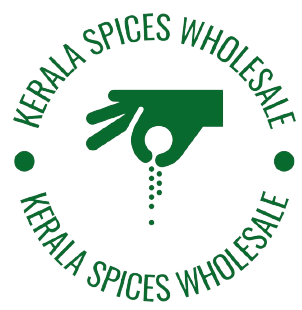Kerala, often referred to as “God’s Own Country,” is renowned for its lush landscapes, tranquil backwaters, and vibrant culture. Among its many treasures, Kerala’s spice plantations stand out as a testament to its rich agricultural heritage. At Kerala Spice Wholesale, we take pride in offering the finest spices sourced directly from these verdant plantations. Let’s take a closer look at the spice plantations in Thekkady, Munnar, and Wayanad, the types of spices cultivated, the cultivation process, and the best times to visit.
Spice Plantations in Thekkady
Thekkady, home to the Periyar Wildlife Sanctuary, is a spice lover’s paradise. The region’s spice plantations are a major attraction, drawing visitors from around the world. Here, you can explore vast expanses of cardamom, pepper, cinnamon, and clove. The aromatic air, combined with the lush green surroundings, provides an unforgettable experience. Thekkady’s climate, characterized by its moderate temperatures and ample rainfall, is perfect for spice cultivation.
Spice Plantations in Munnar
Nestled in the Western Ghats, Munnar is another gem known for its picturesque tea gardens and spice plantations. The cool, misty climate and rich soil make it an ideal location for growing a variety of spices, including nutmeg, ginger, turmeric, and black pepper. A visit to Munnar’s spice plantations offers not just a sensory delight but also a chance to learn about sustainable farming practices that are integral to the region.
Spice Plantations in Wayanad
Wayanad, with its lush forests and rolling hills, offers a unique spice cultivation experience. The plantations here are known for their diversity, cultivating spices such as cardamom, black pepper, and vanilla. Wayanad’s unique microclimate, with its cool temperatures and high humidity, contributes to the distinct flavor profiles of its spices. Visitors to Wayanad can enjoy guided tours that delve into the history and techniques of spice farming.
Types of Spices Cultivated
Kerala’s spice plantations are famed for a wide array of spices. Some of the most notable include:
- Black Pepper: Known as the “King of Spices,” black pepper from Kerala is prized for its pungent flavor and aroma.
- Cardamom: Often referred to as the “Queen of Spices,” Kerala’s cardamom is celebrated for its strong, sweet arom
- Cinnamon: The warm, sweet flavor of Kerala cinnamon is a staple in many culinary traditions.
- Clove: With its strong, pungent flavor, clove is an essential spice grown in Kerala.
- Nutmeg and Mace: These spices are known for their rich, aromatic profiles.
- Ginger and Turmeric: Both are integral to Kerala’s spice heritage, valued for their medicinal properties and robust flavors.
- Vanilla: Wayanad, in particular, is known for its high-quality vanilla.
Spice Cultivation
Spice cultivation in Kerala is a meticulous process that involves selecting the right planting material, ensuring proper soil health, and maintaining optimal growing conditions. Farmers employ traditional techniques alongside modern methods to ensure high yield and quality. Organic farming practices are commonly adopted, emphasizing sustainability and environmental conservation. The harvesting process is equally critical, requiring careful timing and handling to preserve the spices’ essential oils and flavors.
Best Time to Visit
The best time to visit Kerala’s spice plantations is between September and March when the weather is pleasant and conducive for plantation tours. During these months, the climate is cooler, and the monsoon rains have rejuvenated the landscape, making it lush and vibrant.
Climate
Kerala’s climate is predominantly tropical, characterized by a wet and dry season. The monsoon season, from June to August and October to November, brings heavy rainfall, which is vital for the growth of spices. The dry season, from December to May, provides the ideal conditions for harvesting and processing spices. The moderate temperatures and high humidity levels throughout the year make Kerala an ideal location for spice cultivation.
Cost
Visiting spice plantations in Kerala can vary in cost depending on the region and the type of experience you choose. Guided tours typically range from INR 200 to INR 1000 per person. These tours often include a walk through the plantations, insights into the cultivation and harvesting processes, and opportunities to purchase fresh, high-quality spices directly from the source.
Conclusion
At Kerala Spice Wholesale, we bring the essence of Kerala’s spice plantations directly to your doorstep. Whether you are a culinary enthusiast or a spice aficionado, our wide selection of authentic Kerala spices promises to elevate your culinary creations. Discover the rich flavors and aromatic wonders of Kerala’s spice plantations with us and experience the best of what this beautiful region has to offer.


